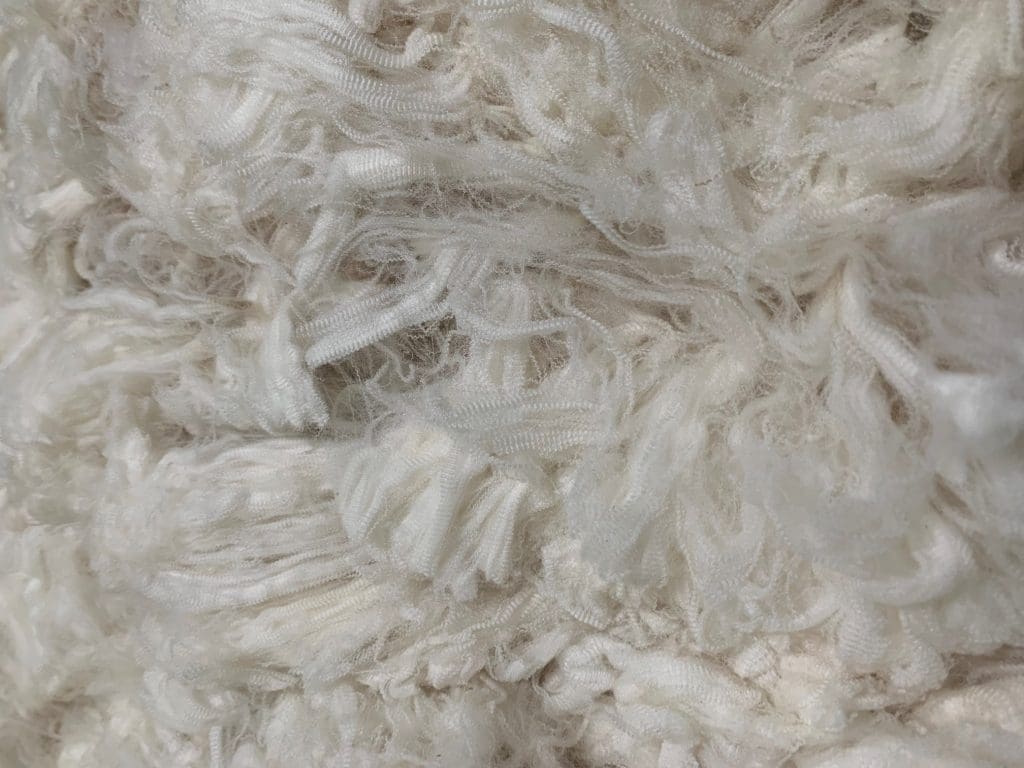
Merino wool prices dropped sharply this week. Image – AWEX.
MERINO wool prices fell by 110-139 cents a kilogram in Australia this week as the market was hit harder by global coronavirus COVID-19 economic impacts.
AWEX senior market analyst Lionel Plunkett said from the opening of sales in Melbourne on Tuesday it was immediately apparent that buyers had significantly reduced their limits.
“By the end of the first day the individual Micron Price Guides (MPGs) had fallen by 29 to 58 cents and the AWEX Eastern Market Indicator (EMI) fell by 19 cents.
“The losses continued into the second day, as buyers continually reduced their buying limits,” he said.
“The MPGs across the country fell by another 26 to 99 cents, and the largest losses experienced in Sydney and Fremantle, as these centres came into line with the Melbourne market.”
The result was the EMI’s largest daily fall since January, of 52 cents.
“The market continued to track downward on the final day, but not at the same rate of the previous two days, as buyers became more confident of the new price levels.”
The Eastern MPGs lost a further 3 to 40 cents, with the EMI falling by 12 cents.
Mr Plunkett said the the EMI closed at 1438c/kg clean for the week, after losing 83 cents, the largest weekly fall in the EMI since October last year. Brokers reacted by passing in 26.5pc of the 41,986-bale offering.
“The EMI has now fallen for six consecutive selling days, falling by a total of 146 cents over this period.
“As the Australian dollar fell to its lowest point in 17 years, the fall in the EMI when viewed in USD terms was more significant, it dropped by US181 cents, a reduction of over 18 percent,” Mr Plunkett said.
However, the market finished on a positive note, with the Fremantle sale selling last and recording increases in its MPGs on the final day of between 5 and 35 cents.
Real price of wool slumps
Australian Wool Innovation trade consultant Scott Carmody said the drop in the EMI in US$ terms more accurately represents the damage done to the wool price.
“The US$ EMI fell a staggering 18.4pc or US181 cents over just three days of selling and ultimately recorded a weekly closing level of 801usc clean/kg.
“The dramatic depreciation of the A$ by over 13pc effectively masked the heavy price erosion of our product in real terms,’ he said.
“Over 70pc of wool is traded using foreign currencies, all of which have appreciated by 10.5-13.7pc against the Australian dollar on a week to week comparison.
“In troubled times investors flee to safety zones, and gold and the US dollar are safe havens for storing cash at present,” he said.
“What is also abundantly clear is, as with all other markets, these highly negative movements are the result of unprecedented events of a global scale and not just specific to the wool industry or Australia,” he said.
“Chinese top makers and trading exporters to China dominated buying lists this week.
“European and other non-Chinese interests appear to have deserted the auction rooms, apart from some specialist super fine and declaration-specific operations,” Mr Carmody said.
“While the price was deteriorating rapidly, the interest from China remained quite strong.
“Word from many sources suggested many of the factories in China are now returning somewhat to normal following their disruptions since the Chinese New Year on the 25th January,” he said.
Mr Carmody said most of wool passed in was in the Merino fleece sector.
“No doubt there is a mounting grower stockpile of bales being held off the market.
“With the movement of stock, equity and share markets substantially lower, those bales may eventually prove to be a better investment than most personal investments or superannuation funds,” he said.
Mr Carmody said thankfully for sheep farmers fortunate enough to be fully stocked heading into autumn/winter, Australia’s domestic meat markets are holding strong at historical highs.
“In a cruel twist this heralds a situation that could be further damage future wool production.
“The problem is two-fold in that wool sheep will be sold into an attractive meat market in the coming weeks and months prior to winter, and secondly, breeding decisions may turn or have turned to the sheep meat breeds rather than good wool producing animals,” he said.
“All of this on top of the drought conditions that either continue, or continue to affect those in recovery mode trying to get a viable livestock operation back into business on farm.”
Despite the market losses this week, the national offering increases next week to 49,874 bales, with all three centres in operation.



When nations are controlled by other nations, as Australia is, and is known to be a weak negotiator, as Australian business is, the opportunism to excel in corporate greed invariably arises when weak decisions are made locally.
In this case, it is ‘coronavirus’ ‘making differences’ when in fact it is market machination. Trillions being borrowed, increasing national debt way outside any ability to repay, businesses being supported as opposed to workers.
In case of wool, guaranteed payments while wool is in storage is not a big deal for a panicking government sending billions around commercial ‘poor me’ claimers, rather than demanding employment be maintained and paying for it. It’s quite obvious in business and commerce that ‘rise and fall’ means you store money for bad times…not for profit, but to do the decent Australian thing with staff as in the “old Australia”.
It’s not news to later pay the difference between the produce price and the sale price when things look good again. That’s where you should be working, not complaining about fall in price.